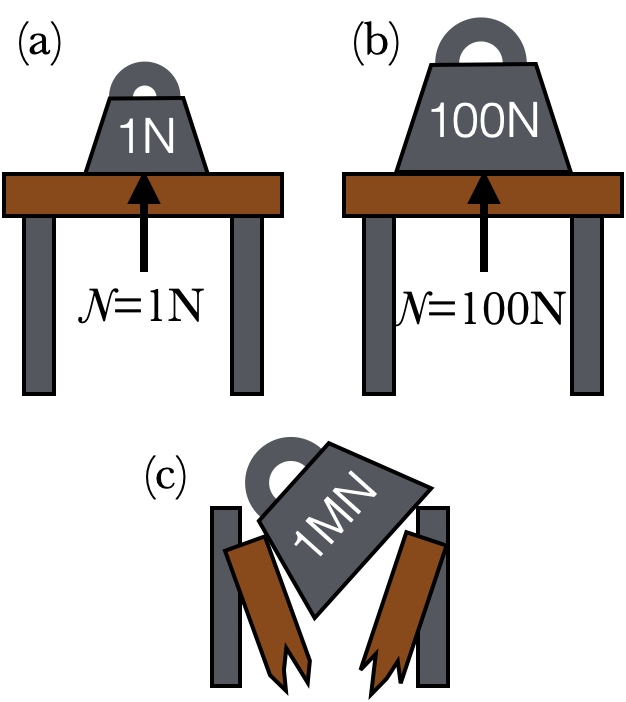11.
Adjustable Limits
Adjustable forces have two limitations. The first is that they usually only operate in certain directions. The normal force must be a push which is perpendicular to the surface of contact. Ropes don't push, tables don't pull.
Second, adjustable forces usually have some maximum value, above which they will break. If an elephant steps on a watermelon, the watermelon will not be able to provide enough normal force to counter the weight of the elephant's foot, and instead it will come apart. Pull too hard on a rope, and it will break as well. We won't think about the breaking points of normal and tension forces in this class because it can get a little complicated depending on exactly how the force is applied. For normal and tension forces this won't be an issue for us, but the same can't be said for static friction...